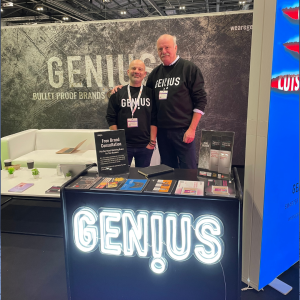How much time do you spend constructing your creative briefs? Where do you get the insights that go into them? Does it even matter?
66%
Our recent survey revealed that 66% of marketers had observed a correlation between the effectiveness of their creative briefing and the ROI of their campaign. And only 8% said no, it didn’t have any effect. So, we can probably assume that it matters. That it gives you a degree of control over the output of your campaign.Writing Great Briefs
A creative brief is the vehicle that allows marketers to steer the direction of their agency’s creative output. But how do you ensure that your input will positively effect that output and result in creative work that delivers a great ROI on your campaign? What can you do to stack the deck in your favour? We’ve long observed that the source of your insights is critical to the effectiveness of the brief. In our recent Creative ROI Report, we looked at how marketers were getting the insights that went into their creative briefs.32%
When asked where they were getting their insights for their briefs, only 32% of marketers instinctively chose customer research. The next most popular options were industry knowledge, team feedback and competitor research. The issue with these three is that they don’t look at what the customer wants directly. The insight is coming through the lens of the supplier of the product or service. And they’re not the ones doing the buying. So, an easy first step to increasing the effectiveness of your creative briefing process is to get closer to insight that comes directly from the customer you’re looking to get to buy your offering. This might be customer research, or it might be analysis of customer behaviour through looking at past campaigns. When asked a subsequent question about what the most important source of insights was, customer research jumped to 42% and second came analysis of past campaigns at 22%. So, deep down marketers know where they should be getting their information, but there’s a bit of a gap between knowing and doing.What Else Makes A Great Brief?
Starting with the right information is a great first step to effective creative briefing. But it’s not all you need. Here are a few more tips that will help you deliver a killer brief next time you have to do one.- Don’t try and do all the thinking. The brief is supposed to provide a to level view of the strategy, objectives and insights that your creative team will use to come up with a great campaign. Don’t use the brief as a vehicle for your own creative ideas and try to get to the solution at that point. You’ll not be using your creative team for their intended purpose (which is a waste of your time and money). And perhaps more importantly, you’ll not provide them with what they actually need to do a good job.
- Have a call as part of the process. Provide your brief in advance. Then have a call where the team can ask questions and where you can brainstorm some initial ideas. This is where you can share any flashes of inspiration you had whilst writing the brief. Your idea might well be “the one” and it’s good to share it. You just want to make sure it’s an option or suggestion, not a prescription of the end result.
- Refer back to it. The brief should guide the creative output. As such should be something that is consulted at every stage to check the team are on track with what you wanted. It can be very easy to get behind a really clever idea. You can get so excited about it that the fact that it doesn’t really answer the brief is forgotten.










